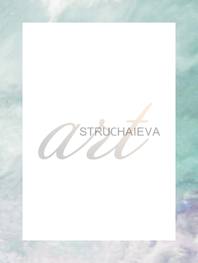Canvases are cheaper and a good option for oil painting. Quality canvases that are primed for oils or acrylic can be chosen.
10 Oil painting tips for beginners!
We have been receiving an overwhelming response from the viewers for the Story of Oil colors, the Oil painting workshop.
But the same time, we also want to inform the beginners about oil painting and the basic supplies that you would require before you start off with Story of oil Color 4th Edition.
Most of us are accustomed with the usage of acrylic and watercolors for paintings. But let’s try it this time with oil colors. Oil colors or oil paints are wonderful and highly pigmented paints that can enhance your paintings and artwork.
Few of us are not aware of the supplies that are required, the differences between the mediums , techniques, etc which has held us back by not letting us try oil painting out , yet.
To begin with the basics, let us run you through the basic set of supplies that you need before you start using oil paints for oil painting.
1) The Oil paints :
The basic supply that anyone is going to need before starting an oil painting is a set of oil colors. Get artist grade quality for best results. The student grade quality is cost efficient with lesser pigmentation but more difficult for oil painting.
Oil paints can be of two types:
One that is soluble in water, and the other that is insoluble in water and needs turpentine as a thinner.
Coming to the brand aspect, look out for artist quality oil colors and choose the pigments that you need for your painting.
One important thing to be noted here is, even a bunch of paints with better quality can give you best results than a set of cheap oil paints.
2) The choice of colors:
As a beginner to oil painting, start out by buying limited colours. Primary colours Blue, red and yellow along with white should suffice.
These colors when mixed can provide secondary colours. Also, you will be saving up a lot of money and ending up with enough colors for your oil painting.
Choose primary colors that are not too opaque. More transparent colors are desirable as they can be mixed easily with other oil paints.
One option of limited palette to start: Alizarin Crimson, Ultramarine Blue and Cadmium Yellow Light. Like almost any oil painting palette, these are used along with white, usually Titanium (opaque) or Titanium-Zinc (less opaque) White.
But if you attending Story of oil color – oil painting workshop then we advice you to get a 12 color camlin 9ml set.
25 Oil Painting Tips for Beginners

Many novice artists, who have already tried themselves in some types of painting but have no experience with oil, feel a certain fear of it. This is mostly due to a misunderstanding of the working process with oil paints and its technologies. Oil painting, indeed, has a number of features that distinguish it from other possible options and give it a certain mystery. However, even they are not a reason to hold back the desire to work with oil.
To help you clear your doubts and gain the confidence you need to start oil painting, here are some useful tips and secrets for beginners on oil painting.
Oil painting is quite multifaceted, therefore, we decided to divide all the tips into several blocks:
Well, let’s get down to our first set of Oil Painting Tips, where we’ll reveal some of the secrets to choosing tools and materials an artist needs.

- In order for your acquaintance with oil painting to be successful, you should not take the cheapest paints. Look for mid-range paints as the quality of low-budget paints can affect your workflow and be frustrating as a result.
- Buy only two or three brushes to get started. It is better to replenish your set of necessary tools gradually, as you become familiar with the properties of oil paint. Otherwise, you can spend money on things that remain useless.
- Use a palette knife to apply thick layers of paint.
- The more flexible your palette knife is, the more versatile and convenient it is to work with.
- If you want to dilute light colors with oil, use poppy seed rather than linseed oil. Linseed oil can impart unwanted yellowing to light shades.
- If you decide to use “Ivory Black” as your background coat, expect this paint to take longer to dry.
- To help the paints dry faster, they can be mixed with other colors that contain lead, cobalt or manganese.
- In addition to the rectangular canvases we are accustomed to, there are round and oval canvases, which can add originality to your artwork. Don’t be afraid to experiment with shapes.
- If you opted for a wooden palette, make sure it is soaked in boiled oil or varnished for wood. Otherwise, the palette may absorb oil from the paint, thereby changing its properties.
- It will be more comfortable working with oil paints if you get an oil can (a small jar equipped with a clip for attaching to a palette).
And now, we are moving on to the second block of our oil painting tips, where we will focus on painting techniques. Also, here you will learn about the features inherent in oil paints.

- For your convenience, always place paints on the palette in the same order. For example, on one side of the whitewash – warm shades, on the other – cold. This will allow you to quickly match the colors you want.
- In oil painting there is a principle of applying paints “thick over thin”. It lies in the fact that each subsequent layer should be thicker than the previous one. This is due to the fact that the lower layer will absorb oil from the upper one. If the paint is applied in reverse order, the top coat may crack.
- Use linseed oil paints for underpainting or undercoats. It dries faster than other oils and will not keep you waiting long to continue working on a painting.
- Not many aspiring artists know that oil paint can be used without solvents. In this case, a fine distribution of paint can be achieved by brush pressure.
- To create a transparent effect with the so-called “glaze”, mix the following three components in equal proportions:
- linseed oil;
- turpentine;
- varnish for oil painting.
- When composing a paint mixture, remember that the stroke will have to go in the direction of mixing.
- Adding white will give a light color, adding black will be used to create shadow.
- If you paint dots on the canvas with a brush at an angle of 90 degrees, you can add transparency to the painting element.
- Oil paintings take months to dry. Provide an artwork with a well-ventilated and well-lit area for proper drying.
- To protect your artwork and extend its life span, cover the painting with varnish after it is completely dry.
In the third block of tips and secrets of working with oil paints for beginners, I would like to draw your attention to the artist’s workplace. After all, comfort and convenience during working process play an important role in the final result.

- Working with oil paints, be aware that vapors and strong odors will be emitted from solvents and thinners. Make sure that the area, where you will be working, is well ventilated. If this is not possible, a small desktop fan can help fix the situation.
- Make sure you have enough rags and napkins on hand. After all, oil painting is a messy activity.
- The area, where you are going to paint, must be well lit. Otherwise, the resulting colors may differ from those that were in the process of painting. Moreover, detailed rendering always requires good lighting.
- You should have enough space around the artwork to avoid touching materials and tools as you move around the canvas.
- Use a mirror to evaluate your work more objectively. It is more likely to notice own flaws in the reflection.
Well, the main, final secret is a good mood and a desire to paint. A positive attitude plays a key role in every endeavor, and painting is no exception. Be bold, experiment, try yourself in different techniques and do not neglect our tips and secrets of working with oil paints.
If you still have questions about oil painting and the process of its creation, leave your comments below, and we will try to answer them.
You can get to know more about my work and works during an online tour of the Struchaieva Art oil painting gallery.

The earliest work of Leonardo da Vinci
A small painted tile caused quite a stir among the scientists of the art world. This is because some scholars believe that the recently discovered work is Leonardo da Vinci’s earliest known work
July 20, 2020 Read

Interesting facts about painting
Paintings hold the secrets of the creator. Sometimes we manage to solve them, but many of them continue to be riddles, or simply stay unnoticed.
July 20, 2020 Read






